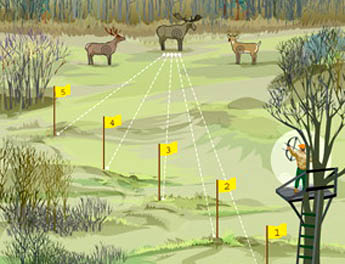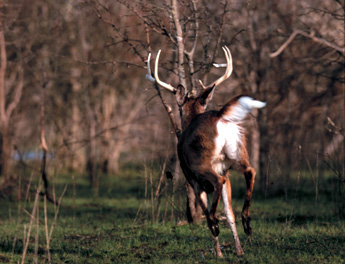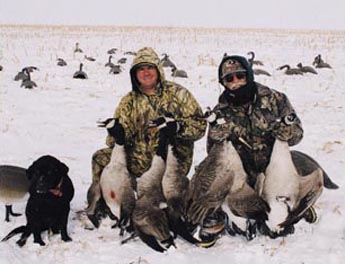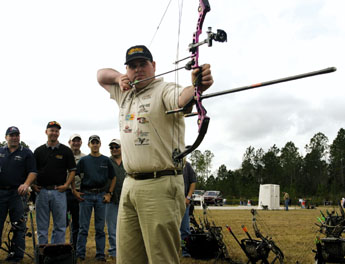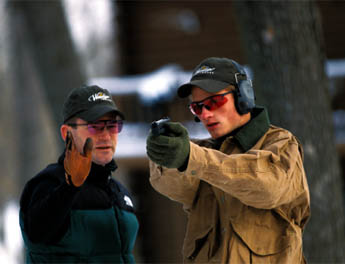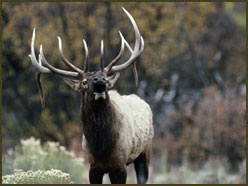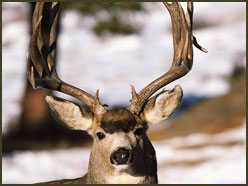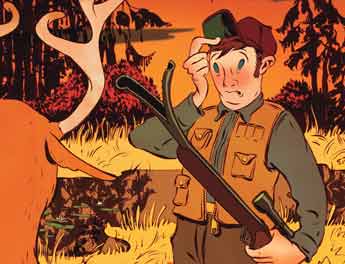Just as a well-tuned bow keeps arrows flying true, only a well-tuned archer is able to maintain tight target groups. Admittedly, stacking arrows in a bag filled with rags or a mundane hay bale day in and day out can certainly push the boredom envelope. Switching from bags or bales to lifelike three-dimensional critter clones adds a level of realism and excitement to practice sessions. These imitations of woods-savvy animals will force you to consider shot placement when you encounter the real thing. All of which translates into not only more practice enjoyment, but more steaks in the freezer at season’s end.
You won’t need as much space as you might think. With just three targets, a few flags and some elbow grease, you can build a tricked-out backyard 3-D course offering 15 shots that vary in distance and delivery angle.
Get Elevated
Most shots in the woods are from elevated stands. Your new backyard 3-D course is a great place to practice these.
Place your stand in a tree near flag No. 1. This allows you to practice at a maximum distance, thereby sharpening both your long and short shots. Make sure your targets are standing up. Shooting at targets that lie flat on the ground can cost you dearly when hunting, as flat targets affect your ability to correctly judge distances.
Total Cost
Depending on the targets you buy, your range should cost about $250 (tree stand not included).
What You Need
- 3 3-D targets (purchase targets that resemble the game animals you intend to hunt)
- 5 surveyor flags (available at your local hardware store)
- tape measure or range finder
- tree stand
[pagebreak] Change It Up
Break up your shooting lanes by placing ice chests, garbage cans, empty boxes, etc., in them, but without obstructing your shots. This will make it considerably more difficult to judge distances.
Also, change target distances and shot angles by pulling up and replanting your flags.
Have a buddy call a flag number and a target for you to shoot.
**1. **When laying out your practice course, devise a shooting matrix. Your course size and shooting distances will be dictated by the amount of space available. A shooting distance of 50 yards is ideal for the farthest station.
Clear the shooting lanes by removing brush, overhanging branches, lawn furniture and anything else that might impede an arrow’s flight. Be sure the area beyond your targets is clear of anything a stray arrow might harm.
**2. **Number the surveyor flags 1 through 5 with a waterproof marker.
3. Situate the three targets in a triangular fashion. The two front targets should be 7 yards apart; the rear target should be 5 yards behind them.
**4. **Place your first flag 50 yards from the back target. Place your other flags at the distances indicated in the diagram above.
